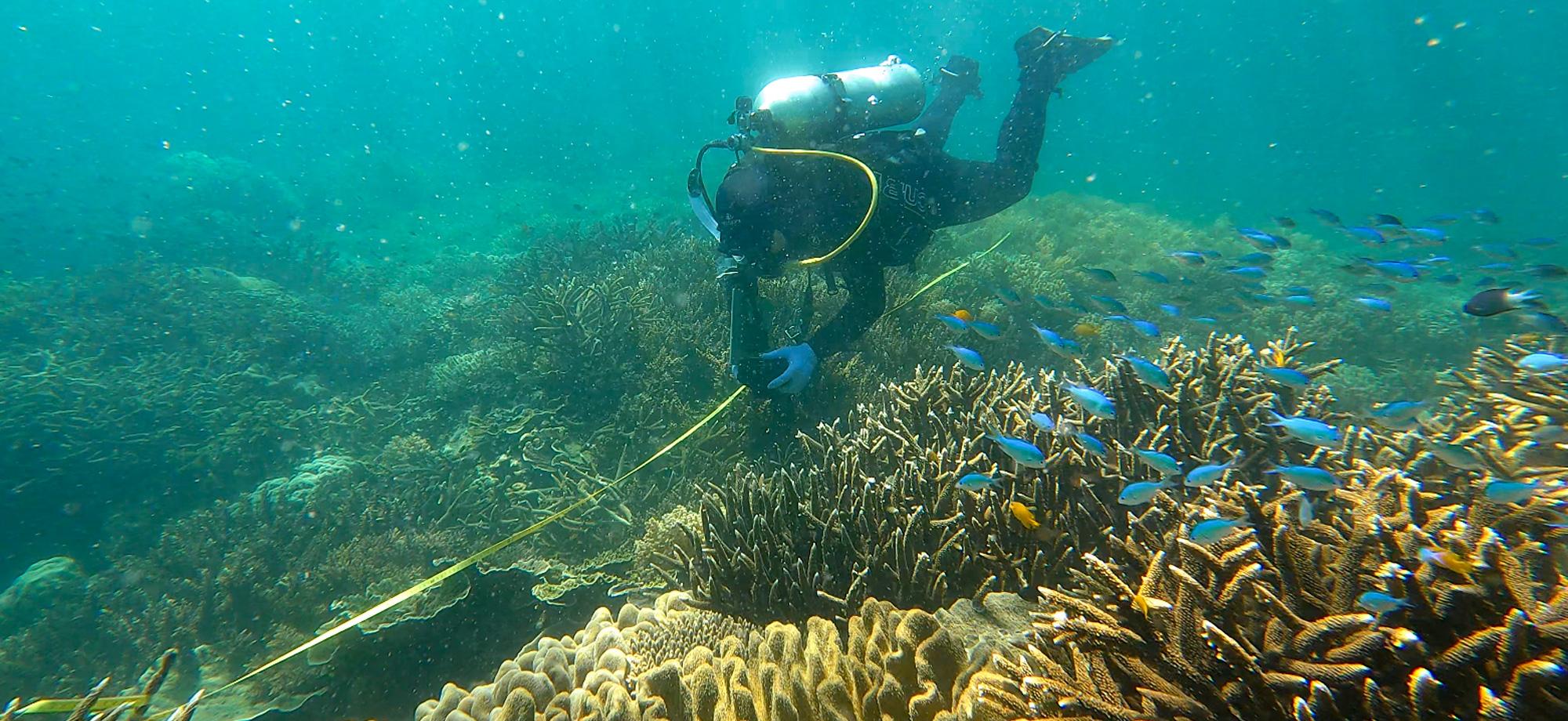Reefs close to the Queensland coastline are called inshore reefs and have distinct communities of animals and plants from those further from the coast.
With increasing proximity to the coast, coral reefs are naturally exposed to more turbid and nutrient rich waters. In addition to these natural differences in water quality, inshore reefs are exposed to increased levels of fine sediment, nutrients and pollutants delivered in river runoff or as a result of coastal development and shipping.
While reefs in these more turbid waters form a small part of the World Heritage Area, inshore reefs:
- support unique biodiversity
- are fundamental to Traditional Owner cultural values
- are valuable to Reef users such as tourism, recreational and commercial fishers
- are easily accessed by Queensland’s coastal communities, providing broad social and cultural value.
Monitoring inshore reefs
AIMS monitors 35 inshore reefs through two programs.
Since 2005 as part of the collaborative Great Barrier Reef Marine Monitoring Program with the Reef Authority, AIMS has monitored 30 reefs with the majority lying within 15 km, but some up to 25 km from the coast.
Since 2019, AIMS have monitored an additional five reefs to the south of Mackay as part of the Southern Inshore Monitoring Program with the Healthy Rivers to Reef Partnership. The reefs in Southern Inshore Monitoring Program range from 3 km to 70 km from the coast.
Data from AIMS' inshore monitoring is designed to detect changes in reef communities adjacent to Queensland’s Wet Tropics, Burdekin, Mackay Whitsunday Isaac and Fitzroy Natural Resource Management (NRM) Regions.
An additional eight inshore reefs are surveyed by AIMS’ Long -Term Monitoring Program.
Both the Long-Term Monitoring Program and the Great Barrier Reef Marine Monitoring Program inshore coral monitoring data contribute to the Reef 2050 Integrated Monitoring and Reporting Program, These data along with the Southern Inshore Monitoring Program also contribute to coral scores in relevant regional report cards.
Access data from these programs via the NRM reef and regional reports on the AIMS Reef Dashboard.
What we measure
The trained team of reef ecologists measure:
- seafloor cover of corals, soft corals and macroalgae
- abundance of juvenile corals
- factors such as disease, that cause coral death.
Data on the changes in these plant and animal communities, along with information on water quality, allow us to better understand the dynamics and resilience of the reefs, and support coastal resource management decisions.
How we measure
Surveys are carried out by marine scientists on SCUBA at permanent sites using photos of the seafloor and direct counts of juvenile corals and causes of coral mortality. As inshore communities can also differ with depth, surveys are carried out at both 2m and 5m depths at most reefs.
Monitoring of inshore reefs differs to reefs further from the coast. High levels of suspended sediments from rivers means water clarity in these areas is often reduced. This prevents surveys of the entire reef perimeter using manta tow, or the counting of reef fish as done on reefs further from shore.

